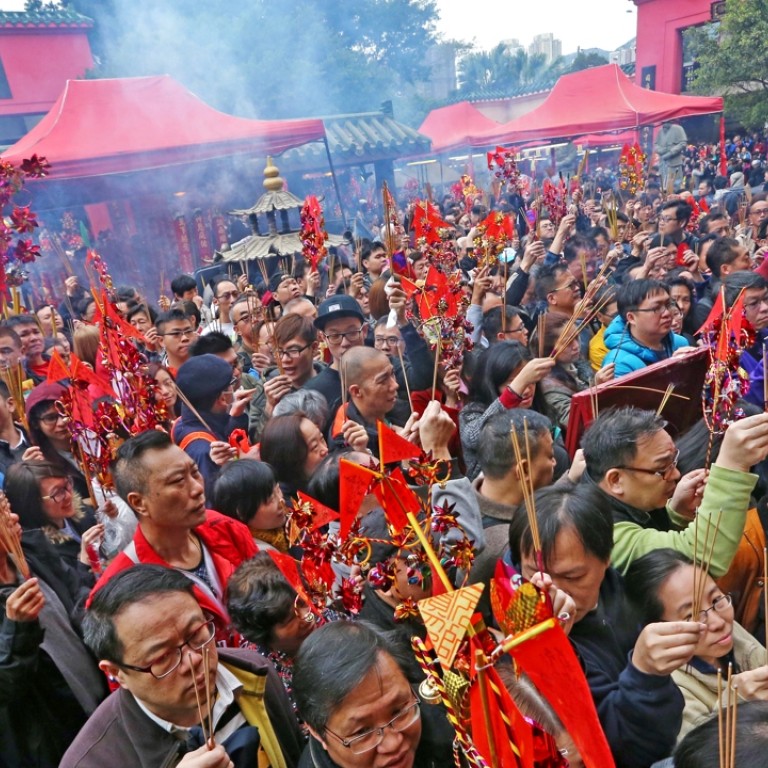
In pictures: a day at Che Kung Temple celebrating the Lunar New Year in Hong Kong
Worshippers brave the crowds during the festive season in search of luck and good fortune
Hundreds of thousands of Hongkongers flock to Che Kung Temple in Sha Tin at the start of every Lunar New Year.
During the festive season visitors brave the crowds and long waits to pay their respects and wish for luck in the coming year. The Taoist temple was named after Song dynasty commander Che Kung, who held a reputation for ridding villages of plagues and suppressing uprisings.
The temple’s signature feature is a fan-shaped brass wheel of fortune, which if spun three times is said to bring good luck.
The whiff of incense floats out of the temple at worshippers even before they get through its doors. Many people buy their offerings at the temple, but many more bring packages of incense and joss sticks along with them bearing writings asking for health and good fortune.

Many worshippers buy red toy windmills, believing that as their mill turns, their luck will also change. The rustle of the foil mills intermingles with people chatting.

The windmills may seem like a toy, but worshippers young and old carry them into the temple for a reason. They can also vary in complexity, with some being a single mill and others a combination of more than 10.
Large incense sticks near the entrance to the temple are decorated with phrases wishing for wealth, safety and good family ties. The offerings are kept under a covered tent, creating an epicentre of fragrance.

The size of the crowds at the temple means there’s a certain flow of traffic pushing through its grounds towards the worshipping hall. Navigating through can be tricky as people hold lit incense and their elaborate windmills.
People are eager to reach the main worshipping hall where they can offer their incense sticks to Che Kung and also spin the fan for good fortune.
Finally in the main hall, there is a lot of milling about, and traffic is still limited to a shuffle. Seeing the giant statue of Che Kung at the main alter is the highlight of the visit.
And now for the hardest part: deciding whether to wish for health, wealth or good food.
For many Hongkongers, visiting Che Kung Temple is a tradition not up for debate no matter rain or shine. The flow of people to the spot will continue to be busy for at least another two weeks.
For a look inside Che Kung Temple on a normal day:

